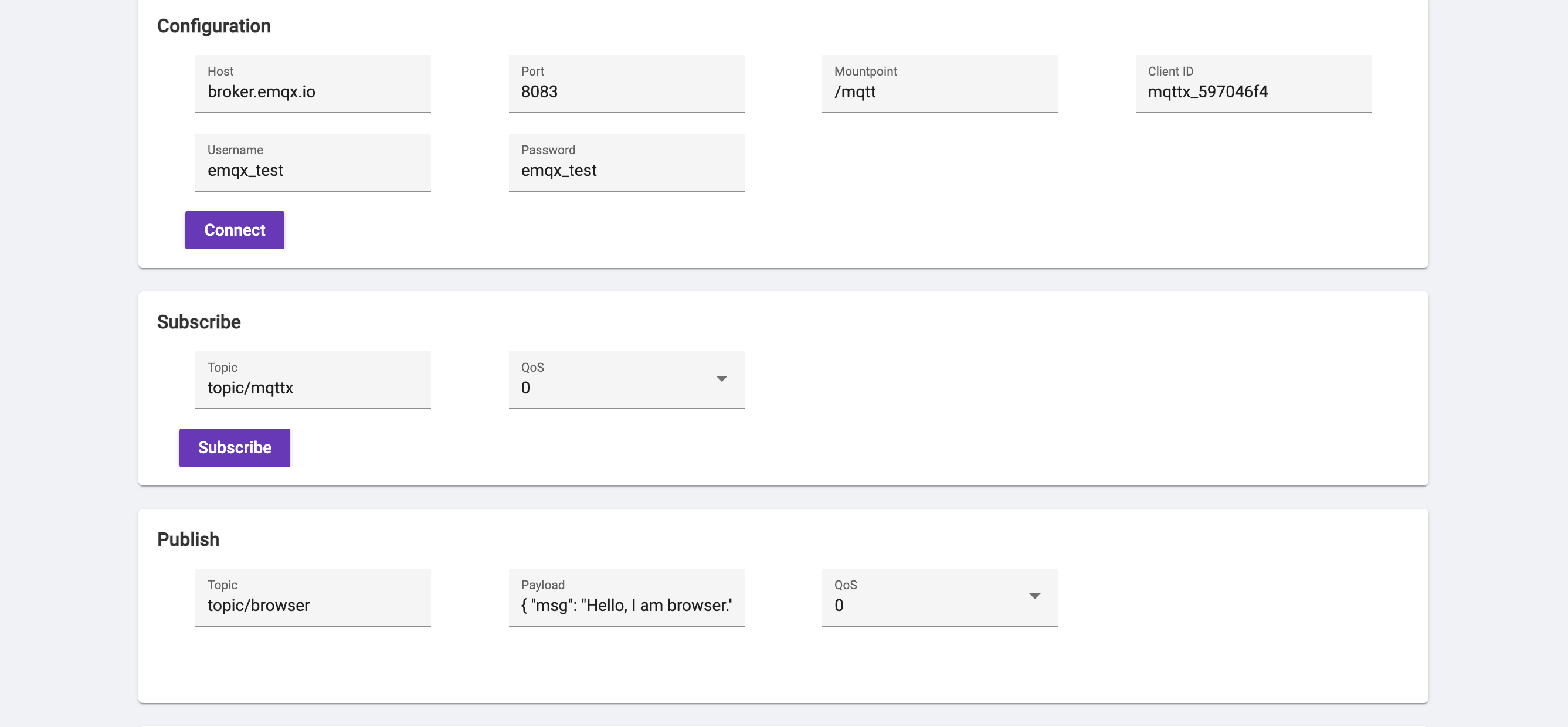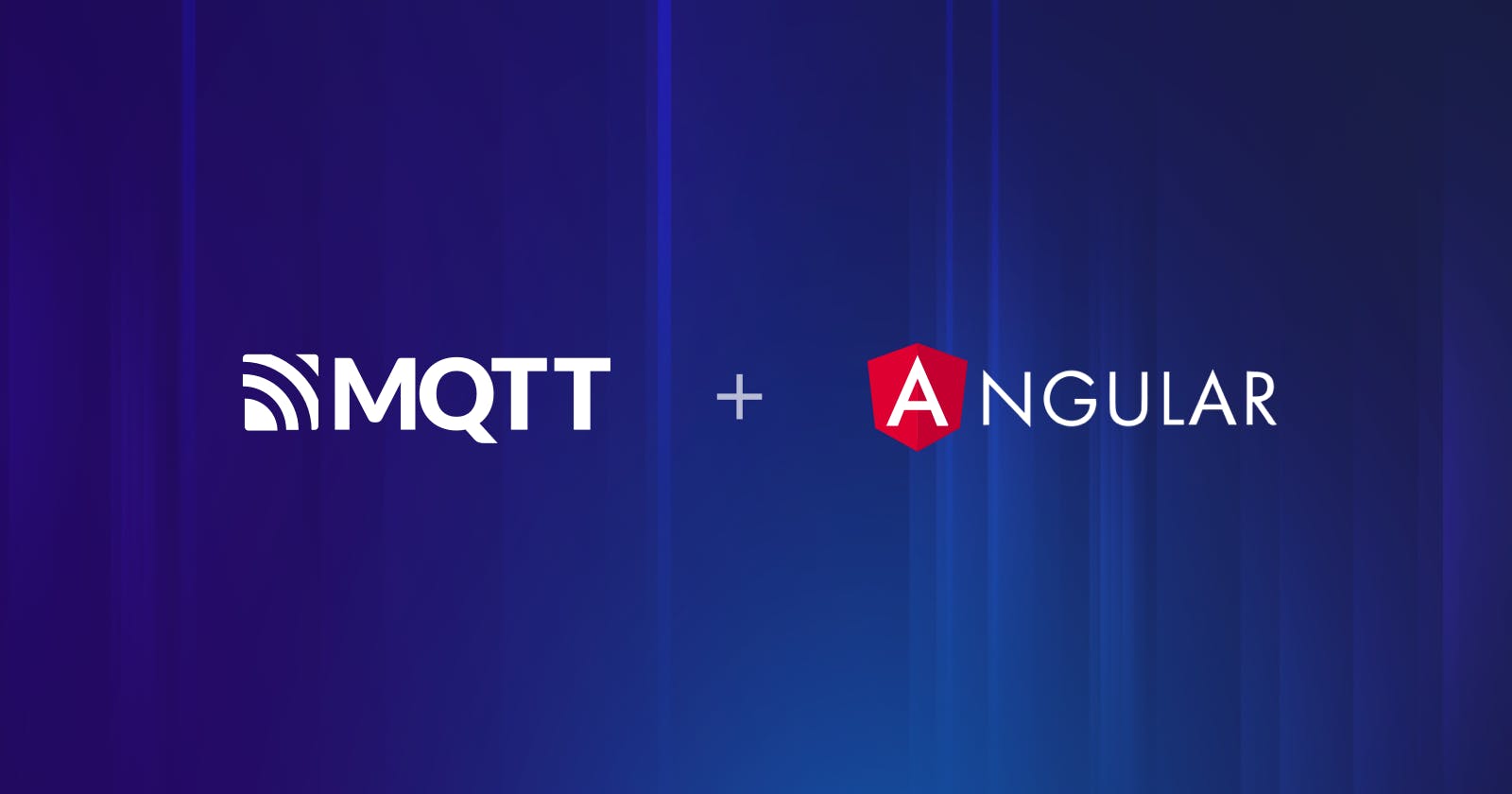How to Use MQTT in The Angular Project
This article introduces how to use MQTT in the Angular project, and implements the connection, subscription and messaging, etc of MQTT.
Angular is a development platform built on top of TypeScript. It consists of a component-based framework for building scalable Web applications; a set of perfectly integrated libraries covering routing, form management, client-server communication and other functions; and a set of development tools to help users develop, build, test, and update codes.
MQTT is a lightweight IoT message transfer protocol based on publish/subscribe mode, providing one-to-many message distribution and application decoupling with small transmission consumption, which can minimize network traffic. At the same time, it can meet various delivery requirements thanks to its three QoS (Quality of Service) levels for messages.
This article will introduce how to use MQTT protocol in Angular projects to connect, subscribe, send/receive messages, unsubscribe and perform other functions between clients and MQTT Broker.
Project Initialization
Create a New Project
The reference is as follows: Create an Angular project with the Angular CLI
Example:
ng new my-app
Installation of MQTT Client Library
The library used in this case is ngx-mqtt, which isn’t just a wrapper around MQTT.js for angular >= 2. It uses observables and takes care of subscription handling and message routing. ngx-mqtt is well-suited for applications with many components and many subscribers.
To install ngx-mqtt via the command line, you can use the npm or yarn command (either one)
npm install ngx-mqtt --save
yarn add ngx-mqtt
Use of MQTT
Connecting to MQTT Broker
We use the public MQTT Broker provided by EMQX in this article, which is built on top of the MQTT cloud service - EMQX Cloud. EMQX is a large-scale distributed IoT MQTT message broker that can efficiently and reliably connect massive IoT devices, process and distribute messages and event flow data in real time, and help customers build business-critical IoT platforms and applications.
The server access information is as follows:
- Broker:
broker.emqx.io - TCP Port: 1883
- WebSocket Port: 8083
Key codes for connection:
import {
IMqttMessage,
IMqttServiceOptions,
MqttService,
IPublishOptions,
} from 'ngx-mqtt';
import { IClientSubscribeOptions } from 'mqtt-browser';
import { Subscription } from 'rxjs';
@Component({
selector: 'app-root',
templateUrl: './app.component.html',
styleUrls: ['./app.component.scss'],
})
export class AppComponent {
constructor(private _mqttService: MqttService) {
this.client = this._mqttService;
}
private curSubscription: Subscription | undefined;
connection = {
hostname: 'broker.emqx.io',
port: 8083,
path: '/mqtt',
clean: true, // Retain session
connectTimeout: 4000, // Timeout period
reconnectPeriod: 4000, // Reconnect period
// Authentication information
clientId: 'mqttx_597046f4',
username: 'emqx_test',
password: 'emqx_test',
protocol: 'ws',
}
subscription = {
topic: 'topic/mqttx',
qos: 0,
};
publish = {
topic: 'topic/browser',
qos: 0,
payload: '{ "msg": "Hello, I am browser." }',
};
receiveNews = '';
qosList = [
{ label: 0, value: 0 },
{ label: 1, value: 1 },
{ label: 2, value: 2 },
];
client: MqttService | undefined;
isConnection = false;
subscribeSuccess = false;
// Create a connection
createConnection() {
// Connection string, which allows the protocol to specify the connection method to be used
// ws Unencrypted WebSocket connection
// wss Encrypted WebSocket connection
// mqtt Unencrypted TCP connection
// mqtts Encrypted TCP connection
try {
this.client?.connect(this.connection as IMqttServiceOptions)
} catch (error) {
console.log('mqtt.connect error', error);
}
this.client?.onConnect.subscribe(() => {
this.isConnection = true
console.log('Connection succeeded!');
});
this.client?.onError.subscribe((error: any) => {
this.isConnection = false
console.log('Connection failed', error);
});
this.client?.onMessage.subscribe((packet: any) => {
this.receiveNews = this.receiveNews.concat(packet.payload.toString())
console.log(`Received message ${packet.payload.toString()} from topic ${packet.topic}`)
})
}
}
Subscribe to Topics
Upon connecting to the MQTT Broker successfully, call the subscribe method of the current MQTT instance and pass in the Topic and QoS parameters for the successful subscription.
doSubscribe() {
const { topic, qos } = this.subscription
this.curSubscription = this.client?.observe(topic, { qos } as IClientSubscribeOptions).subscribe((message: IMqttMessage) => {
this.subscribeSuccess = true
console.log('Subscribe to topics res', message.payload.toString())
})
}
Unsubscribe
The unsubscribe method can release the resources held by the subscription.
doUnSubscribe() {
this.curSubscription?.unsubscribe()
this.subscribeSuccess = false
}
Message Publishing
The usafePublish publishes messages on topics with optional options, such as QoS and Retain, as shown below.
doPublish() {
const { topic, qos, payload } = this.publish
console.log(this.publish)
this.client?.unsafePublish(topic, payload, { qos } as IPublishOptions)
}
Disconnect
The disconnect will disconnect the MQTT client. The parameter true is passed in to force a disconnection from the MQTT client.
destroyConnection() {
try {
this.client?.disconnect(true)
this.isConnection = false
console.log('Successfully disconnected!')
} catch (error: any) {
console.log('Disconnect failed', error.toString())
}
}
Test
We create the following simple browser application with Angular, which has the following functions: Establish a connection, Subscribe to topics, Send & receive messages, Unsubscribe, Disconnect, and so on. For the complete code, see: https://github.com/emqx/MQTT-Client-Examples/tree/master/mqtt-client-Angular.js

Use MQTT 5.0 client tool - MQTT X as another client to test message sending & receiving.

Before MQTT X sends a second message, unsubscribe at the browser side, and the browser side will not receive subsequent messages sent by MQTT X.
Summary
We have successfully created an MQTT connection in an Angular project and simulated the scenarios of subscription, message sending and receiving, unsubscription, and disconnection between the client and the MQTT.
As one of the three mainstream front-end frameworks, Angular can be used both on the browser and the mobile side. Various interesting applications can be developed by combining MQTT protocol and MQTT cloud service, such as the chat system for customer service or management system for real-time monitoring of IoT device information.
Originally published at https://www.emqx.com.
